GROUP TEST
We find out if MG captured the spirit of its illustrious sports car past by driving three very different examples of the breed
WORDS JAMES WALSHE PICTURES MATT HOWELL
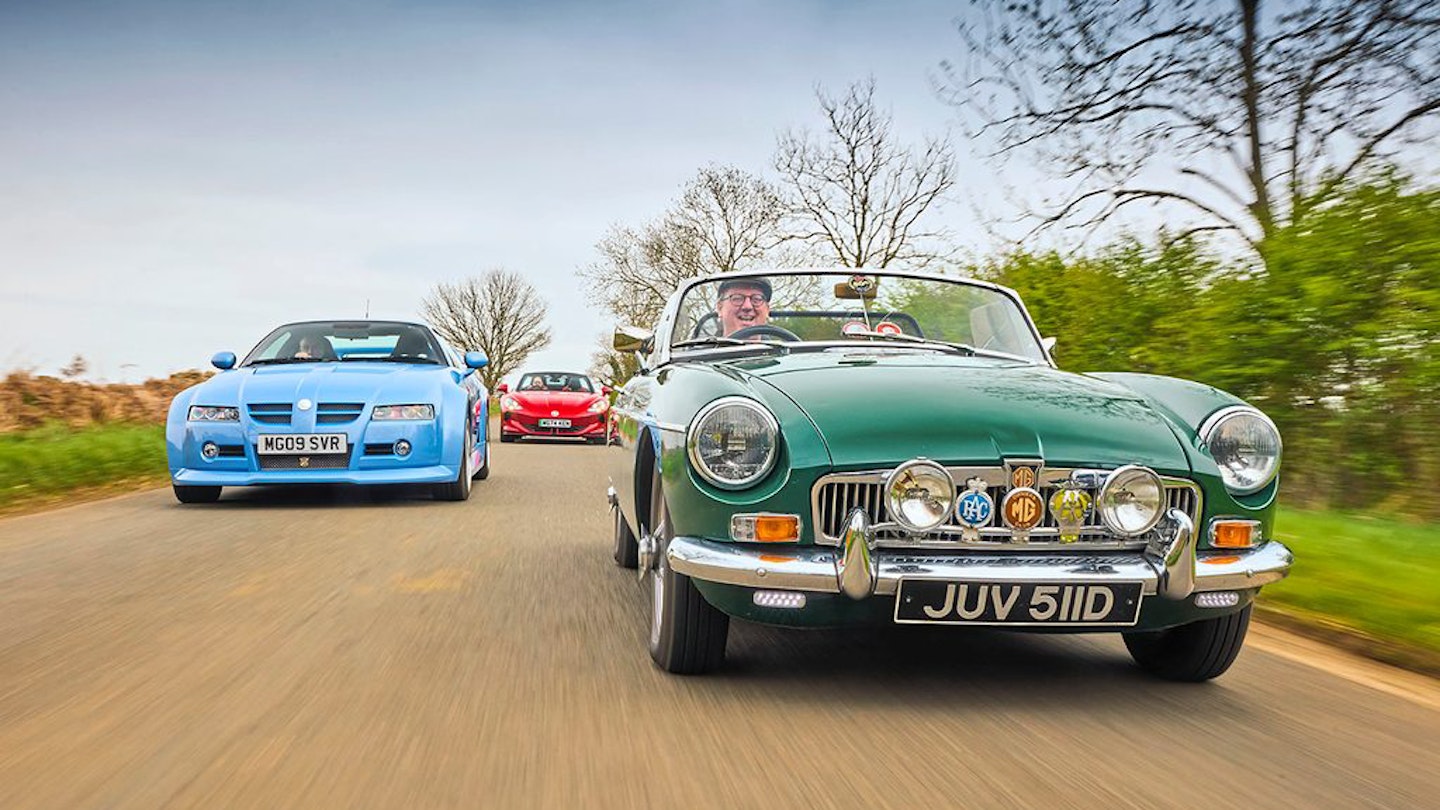
It’s as if the Practical Classics workshop is hosting a royal visit. There’s a genuine hullabaloo as workers and friends emerge from neighbouring units and shuffle across to greet our guest of honour – the striking new MG Cyberster. All seem to know exactly what it is. This is no Lamborghini or McLaren supercar, but the MG certainly has the presence of one. There’s an ensuing hubbub of enthusiastic chatter, especially startling as just feet away, ticking itself cool, is a thumping V8-powered MG SV-R and next to that, dwarfed by both, one of the nicest examples of MGB we’ve seen for a while. So why on earth, I hear you cry, is the 2025 Cyberster in the pages of Practical Classics? What possible place has a modern EV in Britain’s favourite classic car magazine? All will become clear…
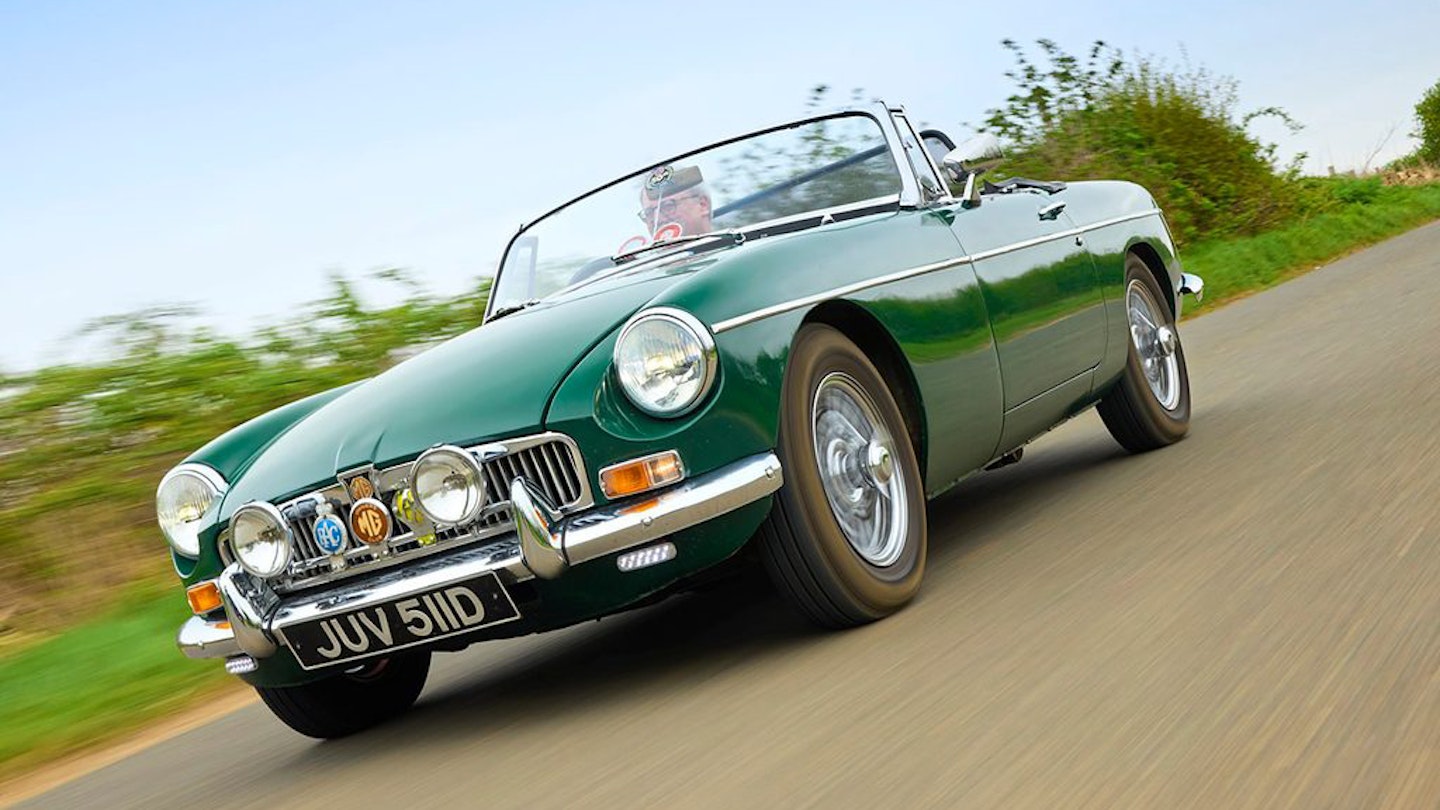
Perfectly proportioned MGB still looks the ’biz.
1966 MGB
Engine 1798cc/4-cyl/OHV
Power 95bhp@5400rpm
Torque 110bhp@3000rpm
Gearbox 4-speed manual + o/d
0-60mph 12.1sec
Top speed 103mph
Economy 25.5mpg
Weight 920kg
MGB: I BOUGHT ONE!

Richard Harrison bought his 1966 MGB 20 years ago. ‘I was retiring, and I wanted a proper sports car – preferably an already fully restored one that I could use right away. I’m now 80 years-old and I can happily report I can still get in and out of the car just fine!’ Richard says it has lived up to its reputation as a classic you can enjoy. ‘I’ve never had issues finding parts or in fixing it. After two decades of ownership, I can’t complain at all. We don’t do too many miles these days, but we regularly used to go to the coast and do rallies. The MGB is a brilliant tourer’.
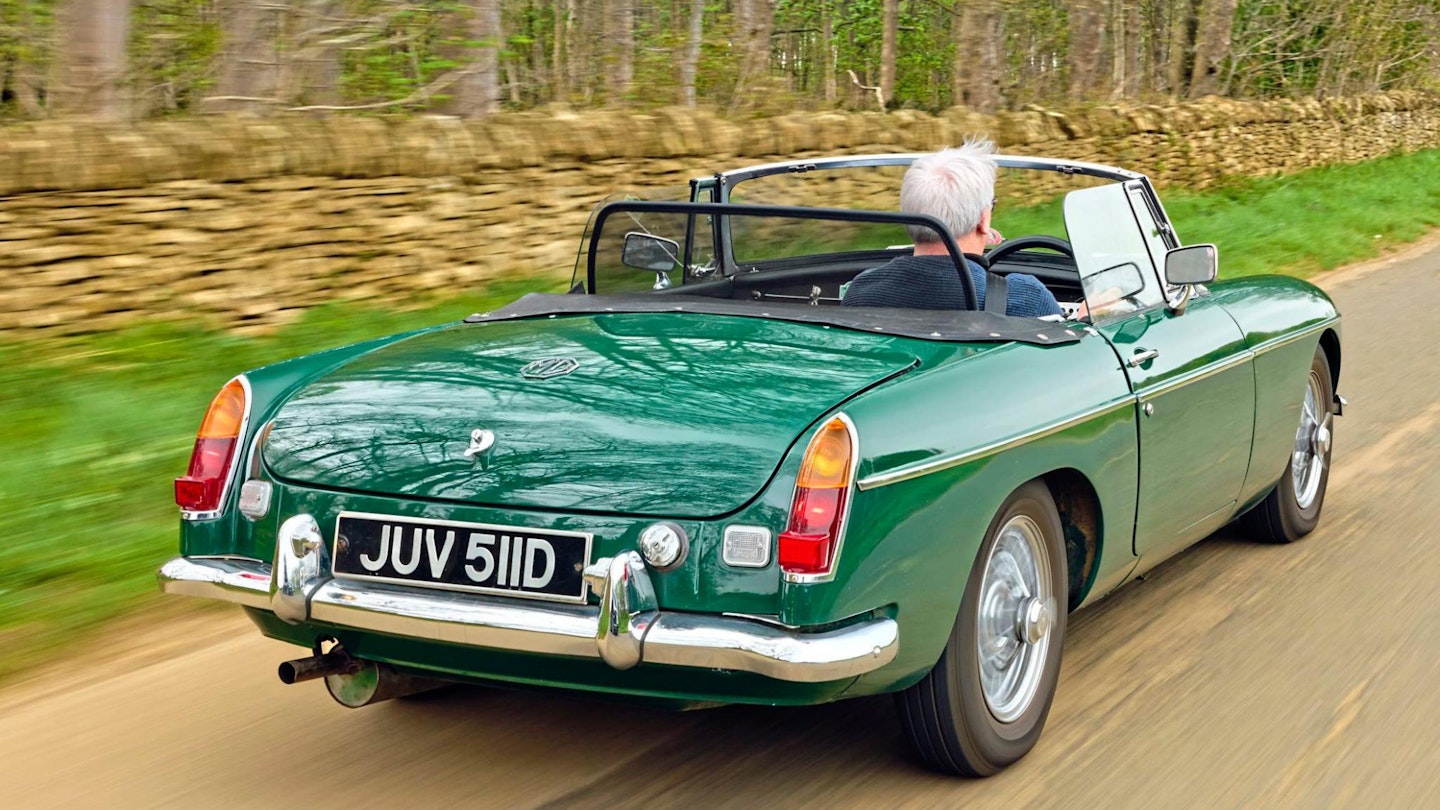
Low windscreen can be an issue for tall folk!
You may have noticed over the years that we rather like an MG. In the same way Greatest Hits Radio plays a selection best-loved favourites on a rotating playlist, you’ll regularly spy a product of Morris Garages in these pages – be it rotten project or restored showstopper. The ever-popular MGB, especially, remains the pinnacle of classic motoring for millions and for good reason. Firstly, the ’B still looks sensational. Forget that we’ve all seen a zillion of them; just study that shape. It has one of the most neatly sculpted, well-proportioned bodies of all time. It is no more than it needs to be, with deftly chiselled details – from the neat front grille and headlamps, to the lines that flow down its elegant flanks and into the tail lamps. Visually, there was, and still is, a rightness and perfect balance to it.
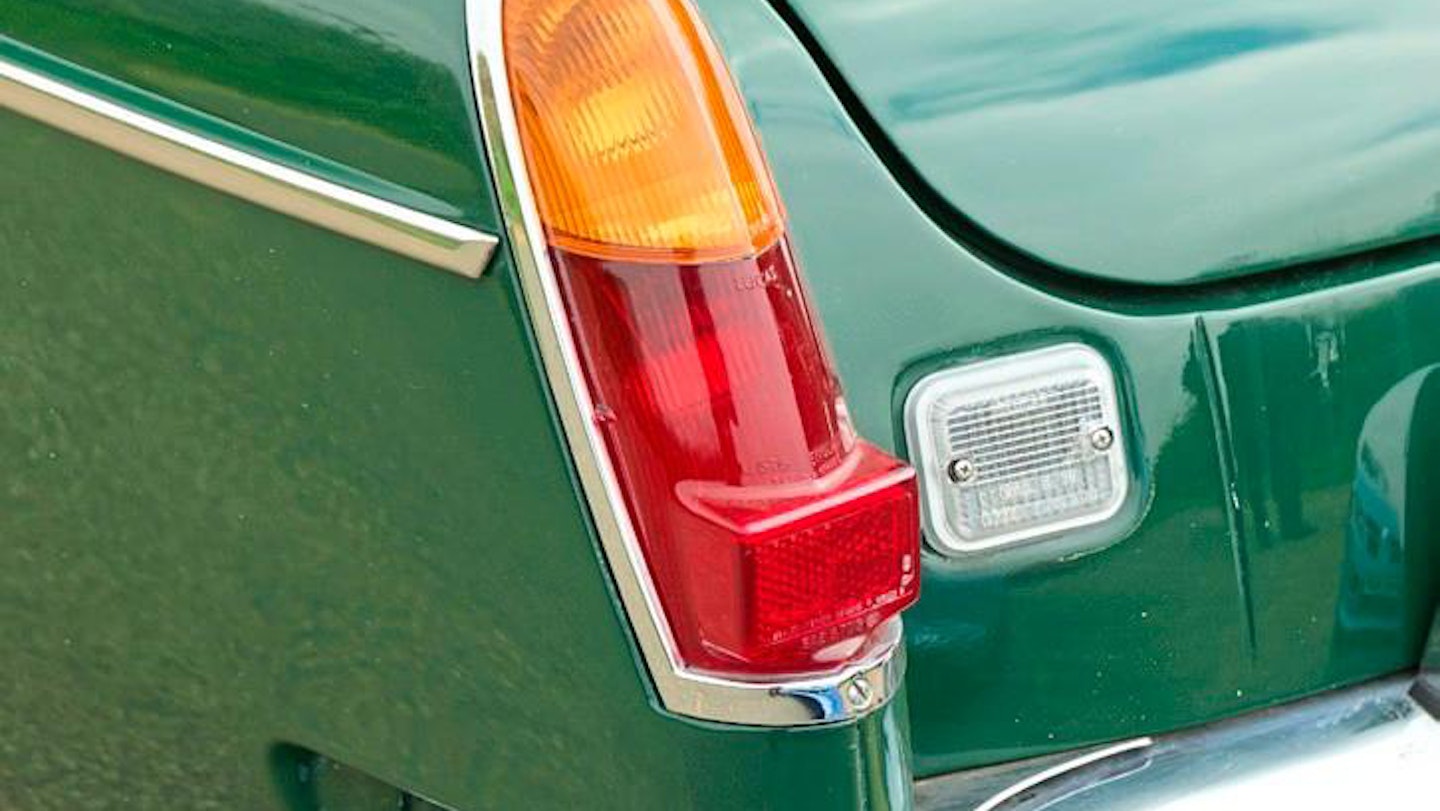
Details delight at every corner.
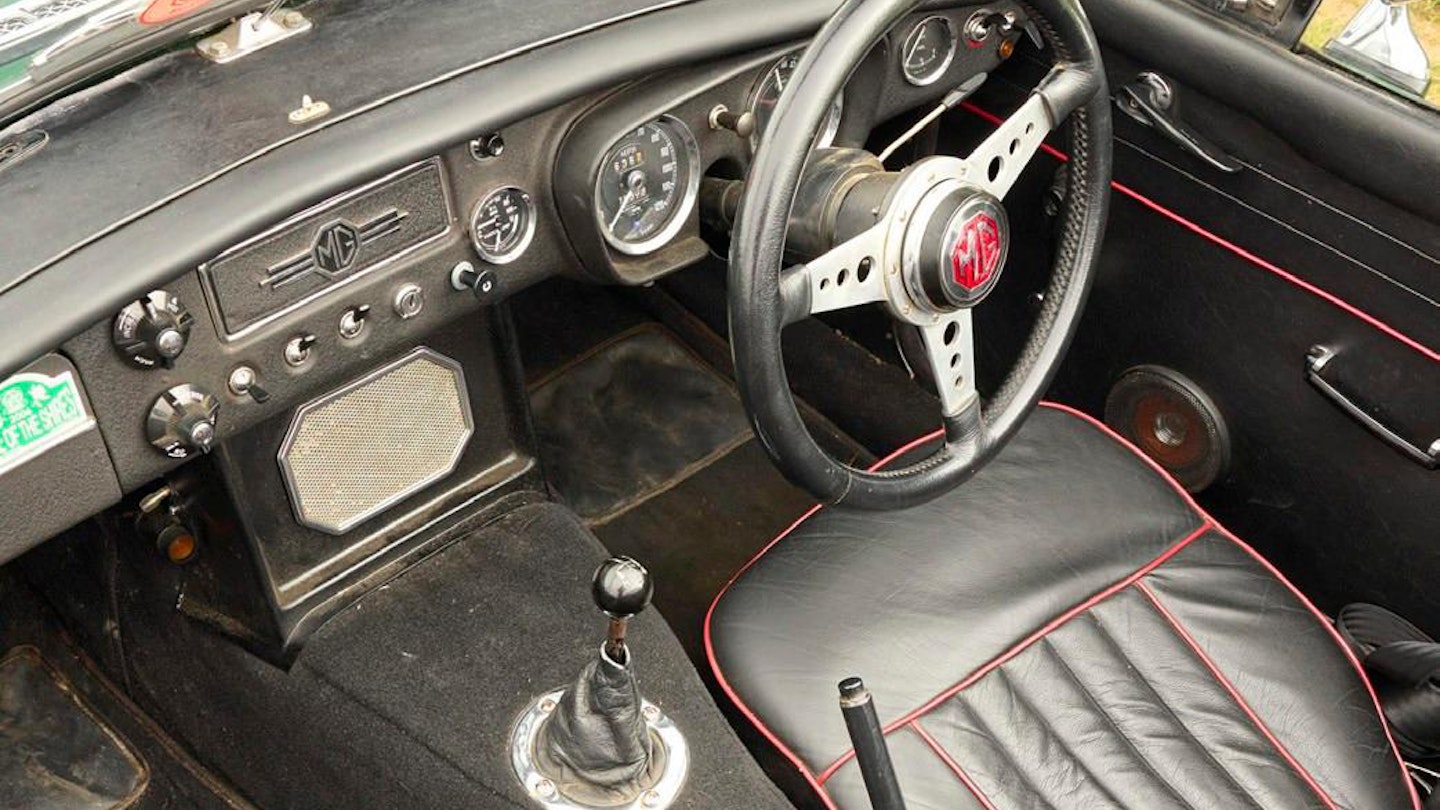
Cabin compact, but comfy for touring.
The MGB launched with superior engineering substance over its predecessors, with unitary structure adding stiffness and safety; customers also appreciating its refinements (such as wind-up windows) over rival sports cars. Some mechanical bits of the MGA were carried over and, while that B-Series engine had its roots in the late Forties (upgraded from 1622cc to 1798cc for the ’B), it’s barely detectable when you get behind the wheel. A twist of the dainty key is met with a pleasing rasp and while the MGB is no frenetic firecracker in a straight line, a well-sorted one like this feels lively enough; especially after the five-bearing crankshaft upgrade from late ’64.
From the start, the ’B set new standards of performance and comfort – road testers even ambitiously suggesting it felt like it had an extra two cylinders. A little over the top perhaps, but planting my size eleven to the floor reveals a pleasingly smooth delivery of torque. The engine is a little uncivil around peak revs and there’s some gentle joggling on uneven surfaces, but it isn’t intrusive. Back off a little and you discover the MGB’s sweet spot. It’s a car you can enjoy calmly and at modest speeds, especially with such nicely spaced ratios, and road manners that match its performance perfectly. Space is a slight issue when pressing on, so smaller feet would probably help my progress and those of us taller than six feet will be put off a bit by the view ahead, which is significantly obscured by the top of the windscreen. I try hunkering further into the seat, but end up in a hunched, Quasimodo-esque driving position. Not ideal.

Easy to fix and tune.
‘A twist of the dainty key is met with a pleasing rasp from the exhaust’
Neither was the big facelift of 1975. The grumbles about raised suspension to suit US safety regulations and the iffy effects it had on handling were justified, but many owners have found a way to eliminate the pitfalls. As for the styling, I happen to think British Leyland did a decent job of tweaking it. The revised Midget’s rubber lips looked a tad gormless to my eyes, but Abingdon managed to do a more cohesive job with the MGB’s neat polyurethane bumpers. Regardless, half a million MGBs rolled off the line in 18 years of continuous production. That is, by sports car standards, astonishing. All versions are regarded with affection, with the ’B reaching all four corners of the globe, including the United States where there remains an enthusiastic following and among Australians, who built the MGB between 1963 and 1972.
ENTER THE BEAST
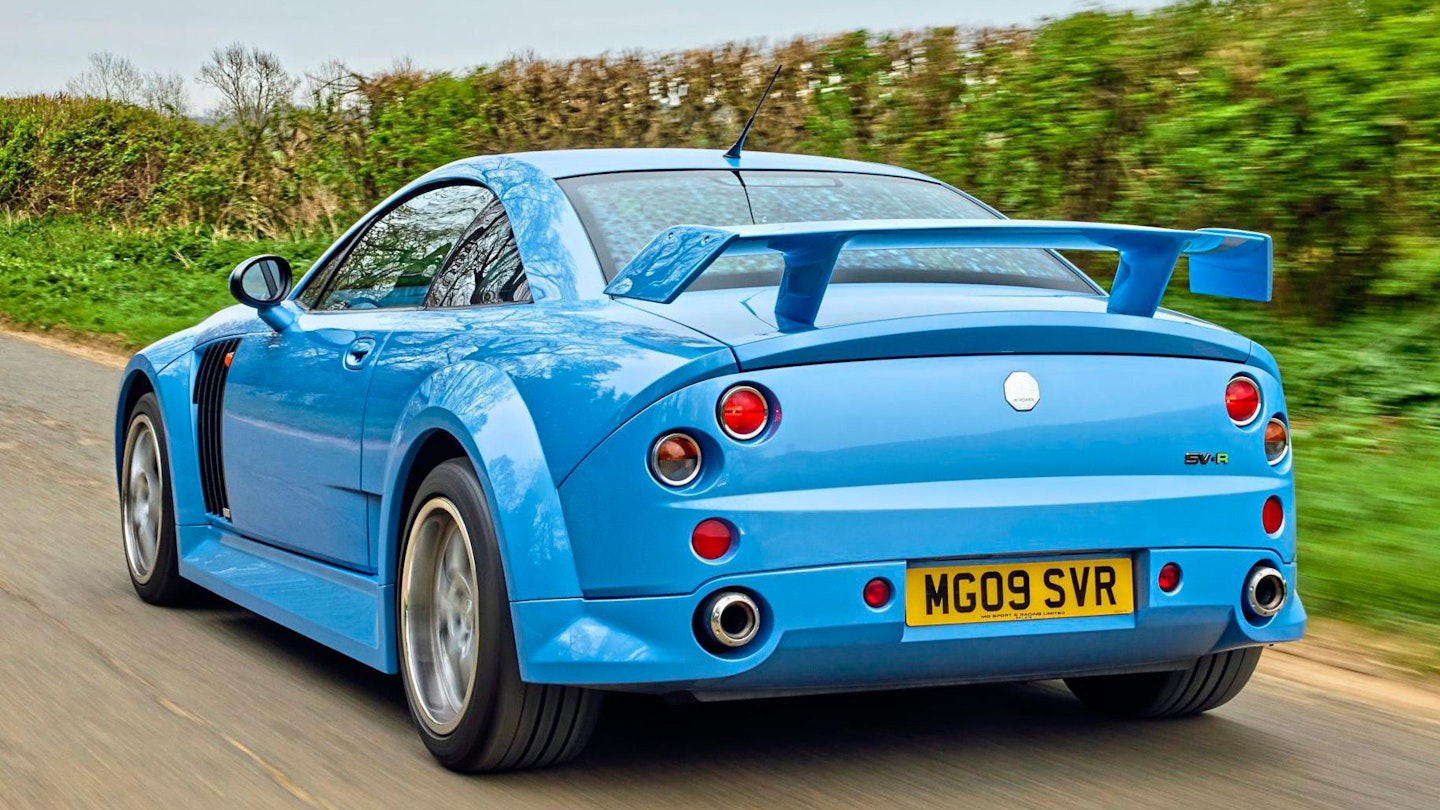
MG XPower SV-R
Engine 4996cc/V8/OHC
Power 385bhp@6000rpm
Torque 375lb ft@4750rpm
Gearbox 6-speed manual
0-60mph 4.9sec
Top speed 175mph
Economy 20.8mpg
Weight 1500kg
MG SV-R: I BOUGHT ONE!

After he first saw this example at the 2004 motor show, Dom Middleton later attempted to buy it in a liquidation auction, but was beaten to it. Then, five years ago, he noticed it for sale so bagged it. He says the years haven’t dulled its appeal. ‘I still love everything about it. When you open the garage door it feels like an occasion. Each time you drive it, it’s an exciting experience. Compared to modern cars, you could say it has a slightly clunky gearchange and a heavy clutch, but you only notice those things at 20mph. You don’t notice when you’re going fast!’
Any subsequent claims of a car maker capturing the ‘essence of MG’ was in for scrutiny. Mazda beat Rover Group to it with the supreme MX-5 in 1989, but Cowley swiftly – and somewhat surprisingly – hopped into action when it took to fettling an MGB body remanufactured by British Motor Heritage. The RV8 was hardly sophisticated, (it was largely original ’B spec underneath) but this intriguing Connolly-lined rehash of the formula, with the insertion of a rumbling 3.9-litre Rover V8, gave Longbridge enough confidence in 1995 to commence production of its all-new MGF to a delighted public.
From its origins as a K-Series powered sports car riding on Hydragas, the handsome little ’F sat at the top of the sales charts for the next few years, morphing into the coil-sprung TF from 2002. While those tweaks gave it an athletic feel on the road, MG Rover at that time needed something with more ‘meat’ – a brassy headline grabber. Nobody expected what would happen next. The sheer absurdity of the XPower SV was noted at the time – but MG Rover’s purchase of Italian car maker Qvale and subsequent reinvention of its wonky looking Mangusta did the trick. Suddenly, everyone was talking about MG Rover.
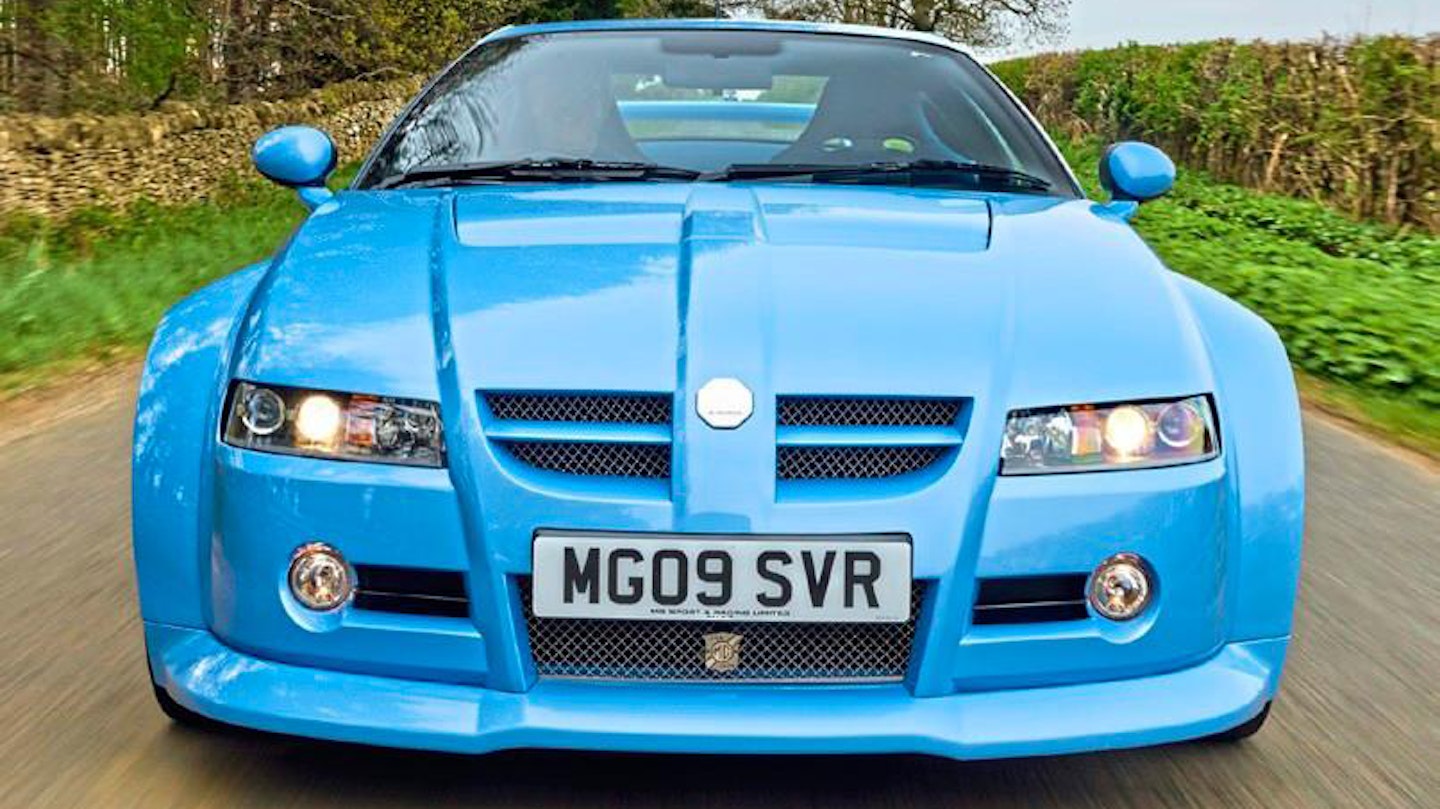
The sound is… memorable!
‘Turns out the SV-Ris more whippet than bulldog’
I open the door and sink into the menacing embrace of this barbarous old thug. Yet… I’m thrown by first impressions. With soft touch textures and Alcantara, the cabin feels equal parts classy, well-made and roomy. The dashboard is pleasantly simple, peppered with tasteful instruments, nicely weighted controls and chunky switches. Hugged by a supportive Recaro seat and four-point harness, I’m surprised to feel almost cosseted. That is until I fire up the Mustang-based V8 and my ears are assaulted by a scandalous cacophony. My colleagues watch from a distance, laughing and fully aware that this really isn’t my cup of tea.
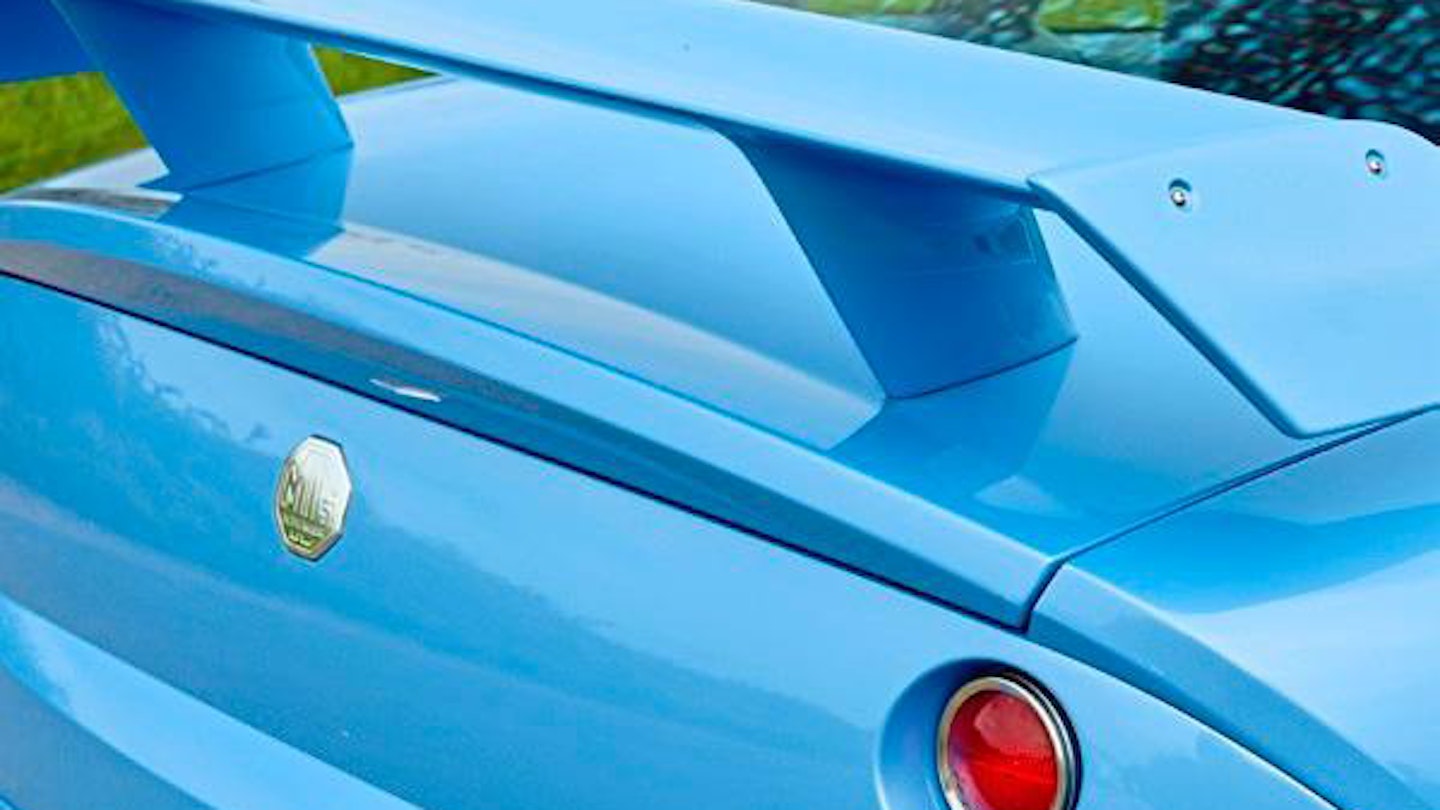
Stevens influenced by The Fast and the Furious.
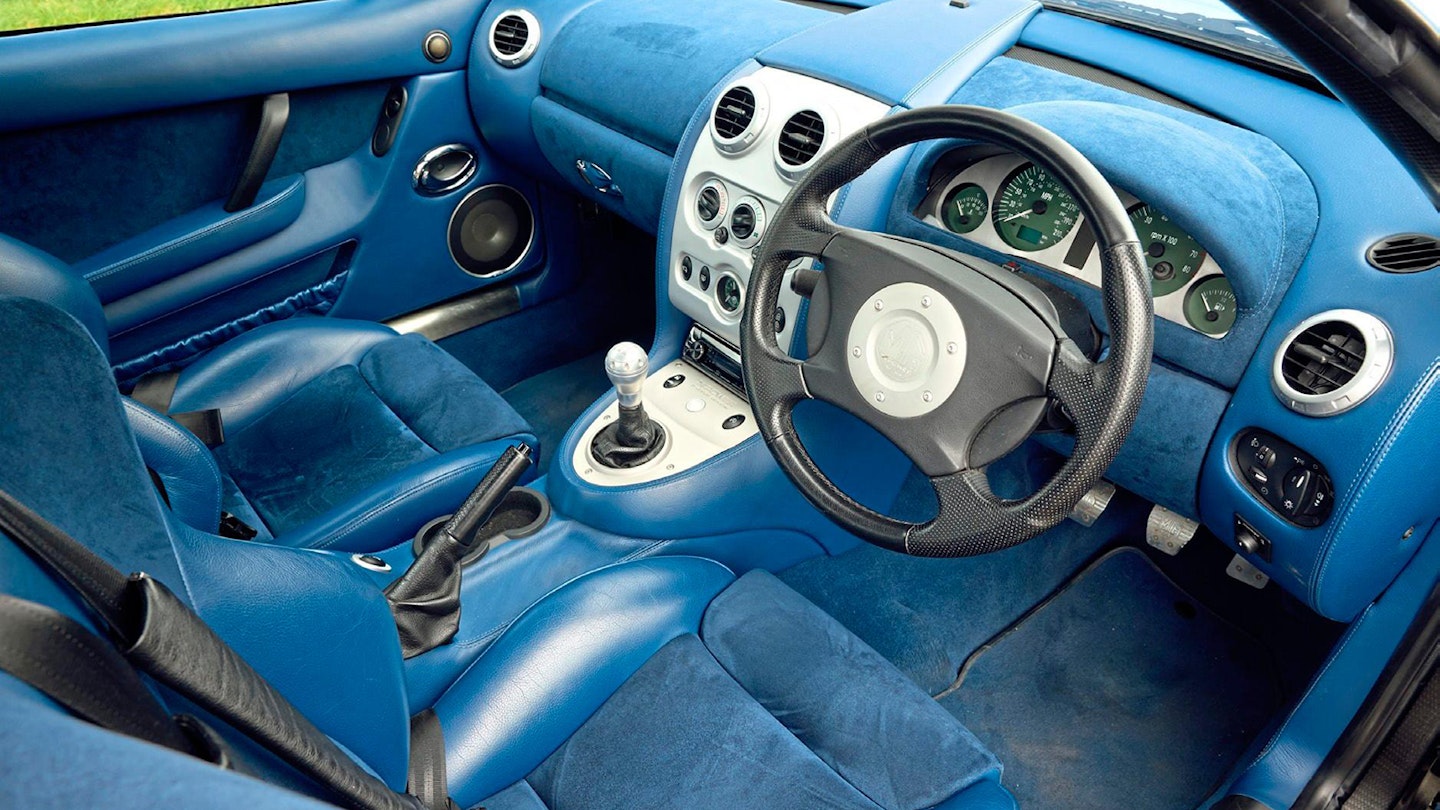
Excellent quality cabin surprisingly comfy.
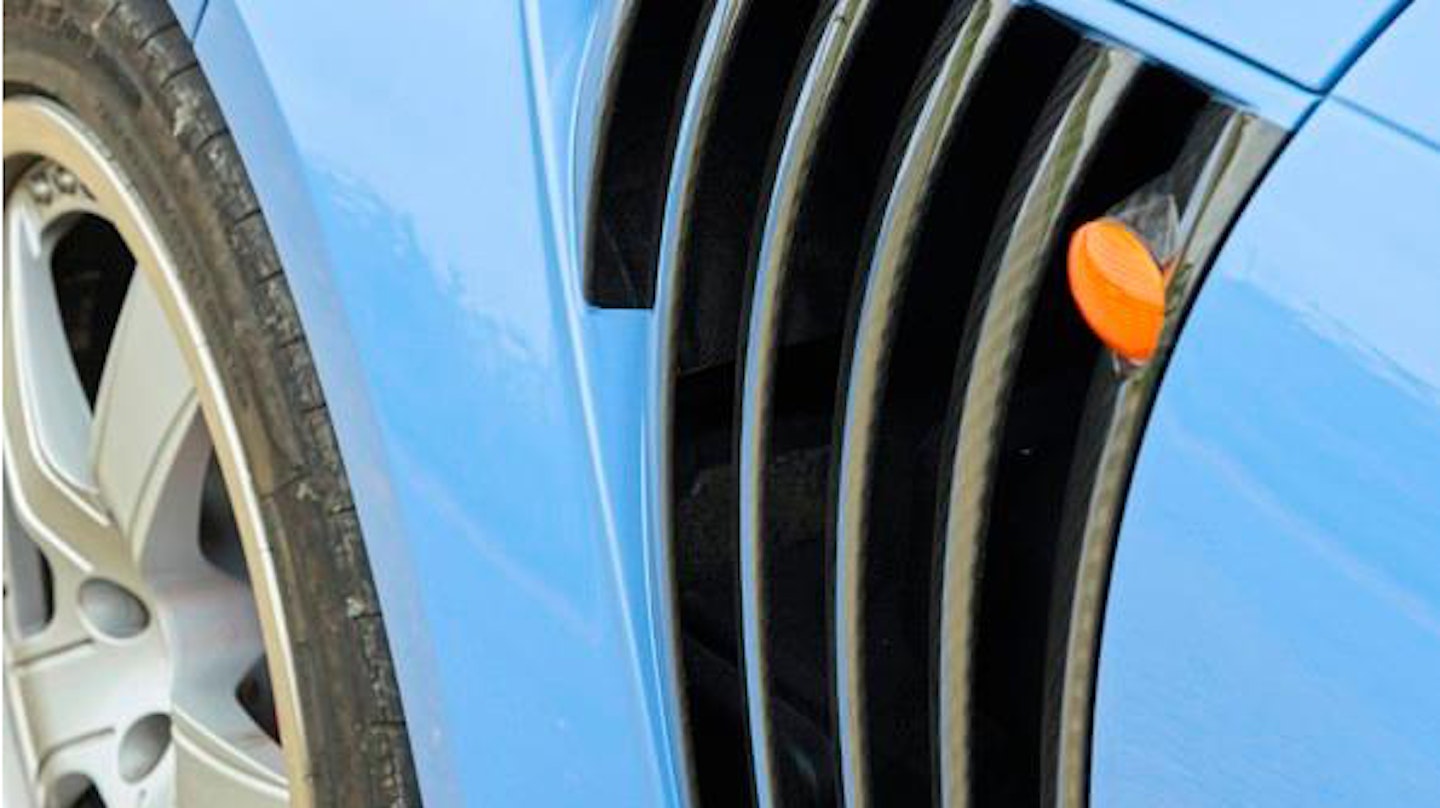
Dramatic styling flourishes throughout.
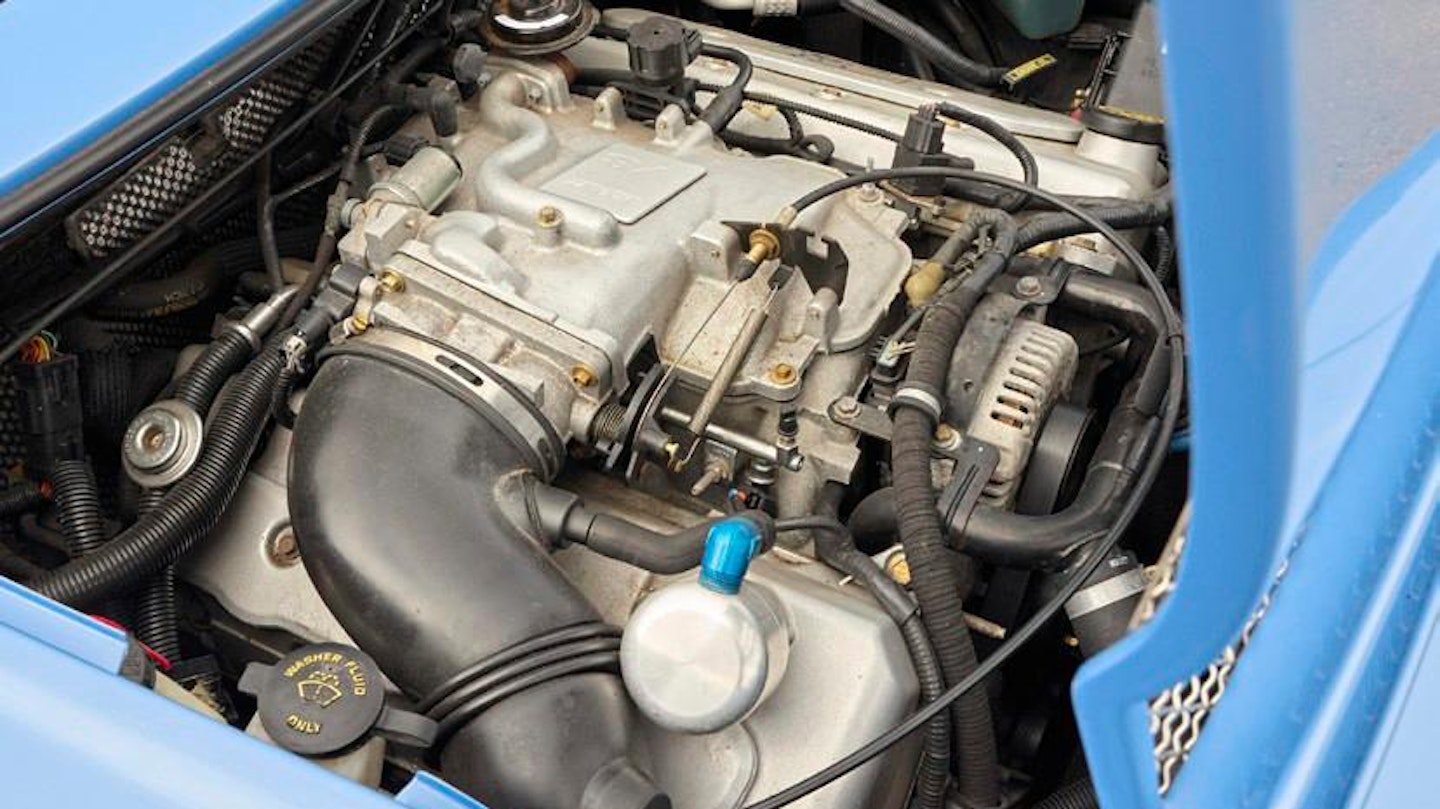
Throaty Mustang V8 is glorious.
Gingerly nosing out of the yard and onto the main road, I’m conscious of the responsibility and sense unruliness ahead. I arrived today in a 29bhp 2CV, for goodness’ sake. While the standard 4.6-litre £65,000 SV got 320bhp, this £83,000 5-litre SV-R has a walloping 385 horses to play with. The rollercoaster of anxiety continues as I leave the village, as it soon becomes apparent this is no graceless, unwieldy brute after all. I chuck the SV into a set of bends, and I receive nothing but unanticipated levels of conversion from the steering wheel. I expected stodge, but directional changes are instant – it feels sharp and communicative. What is going on? Well, it turns out the MG SV-R is more whippet than bulldog. Braver now with the throttle, (although I dare not touch Ford’s switchable traction control), I hustle the SV-R across a rapidly blurring landscape, noting also its supple ride. Somebody extremely clever has been at work here; that Peter Stevens fellow. His achievements with any of MG Rover’s performance models – from ZR to ZT 260 – remain vastly underrated. Let’s face it, anyone can build a fast car… one that’s all mouth. But Stevens has a way of engineering his with the trousers to match.
CHINESE WHISPERER
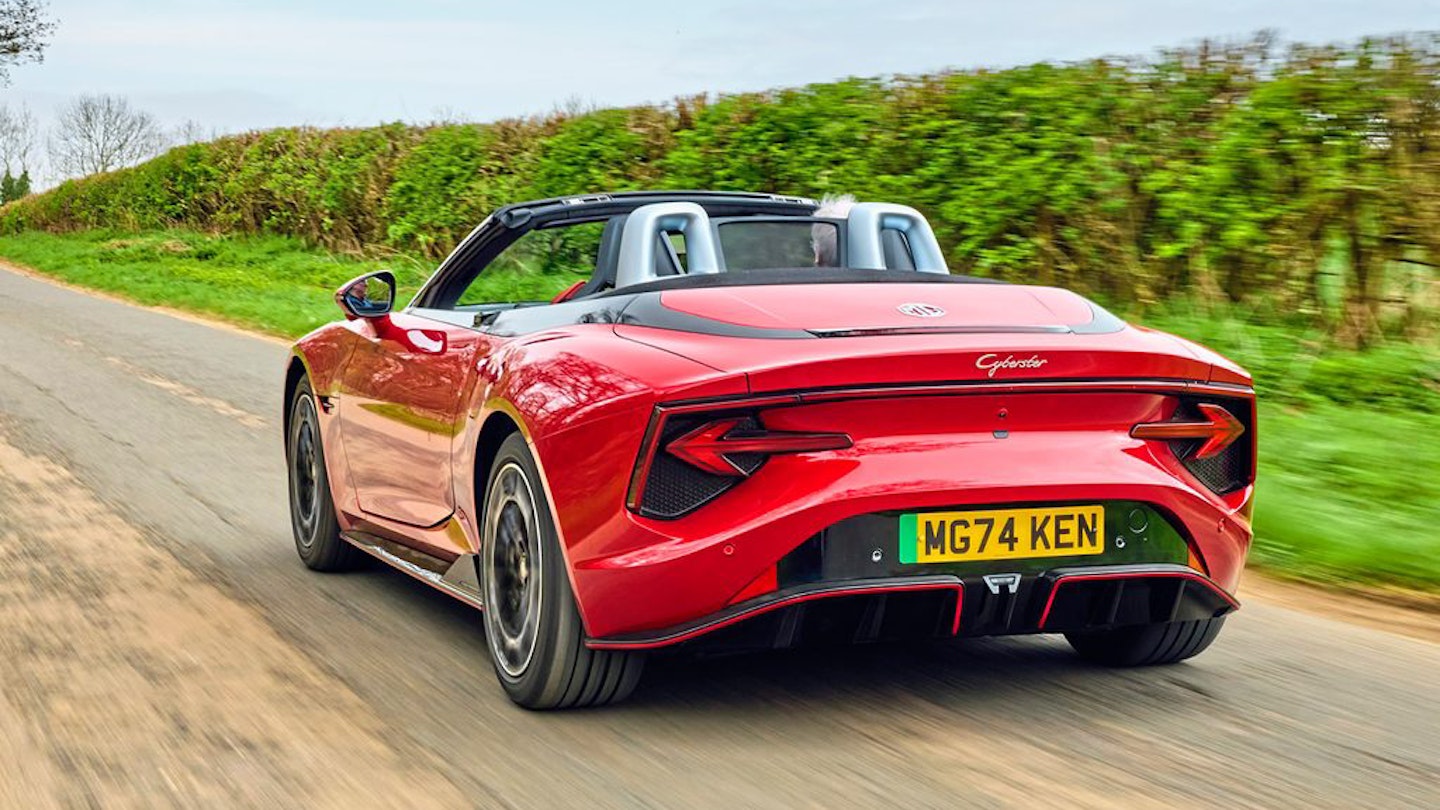
MG Cyberster Trophy
Engine Single electric motor
Battery 77kWh
Power 335bhp
Torque 350lb ft
0-60mph 5sec
Top speed 121mph
Range 316 miles
Weight 1885kg
MG CYBERSTER: WE BOUGHT ONE!

Reactions to BMC/ BL fans Ian and Dawn Kennedy’s recent purchase has been mixed, so far. Says Ian: ‘Predictably, you get people telling you it’s not a real MG or a sports car – that it’s an overweight, bloated EV. But it’s like my Riley Elf or Morris 1100.’ He notices our double-take reaction. ‘No, really. It’s so much more than you expect it to be. It has a similar sharpness to those cars. It’s so eager and direct.’ It’s for that reason the couple fell for the Cyberster. ‘Cars are meant to be fun – to us, the Cyberster feels exactly like an MG should’.
Two decades after MG Rover died, along with its thunderingly talented SV, is this where everything falls apart? Have MG’s new Chinese masters cheapened the legacy of MG in slapping an octagonal badge on some chintzy, bloated EV? I’m sure that some out there are truly willing this to be the case but… it simply isn’t. While Brits dominated the market in the Sixties, Japanese cars took the Seventies by storm and the Germans conquered the Eighties and beyond, it is now China’s turn. The reality is that the Chinese are so far ahead when it comes to advancements in battery tech and electronics in 2025, car makers from Stuttgart to California are now seemingly struggling to keep up.
If the Cyberster is anything to go by, there have been giant strides in the quality of Chinese cars, too. It’s hard not to be impressed by the sensuous curves, (styled by MG’s London office), deep, flawless paintwork and the tightest of shut lines. The scissor doors rise silently (no awkward whirr of motors here) and, once cocooned in the cabin, it’s all soft touch plastics and stitched leather. I can’t find a single bit of scratchy plastic anywhere.
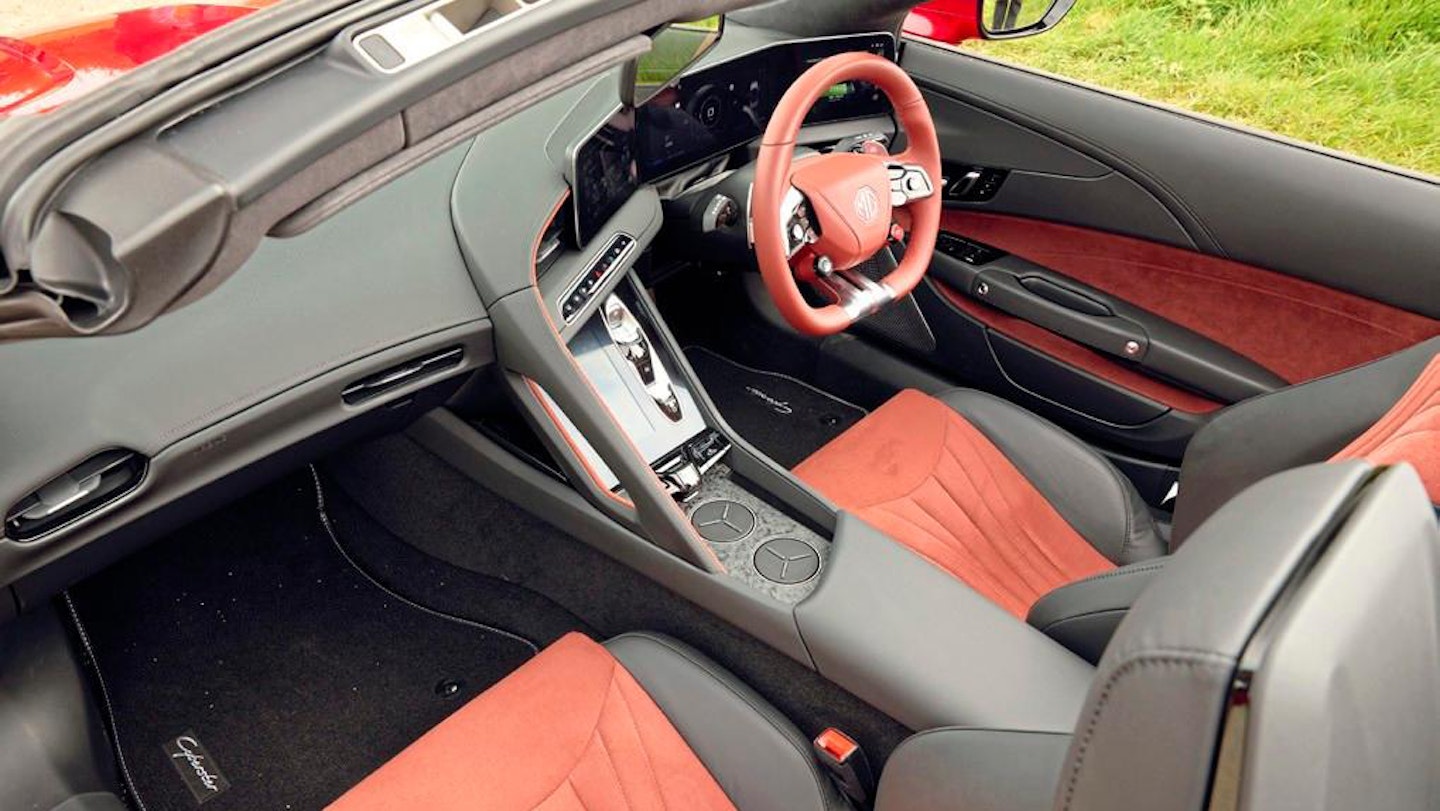
An EV that feels like a driver’s car? Yep!
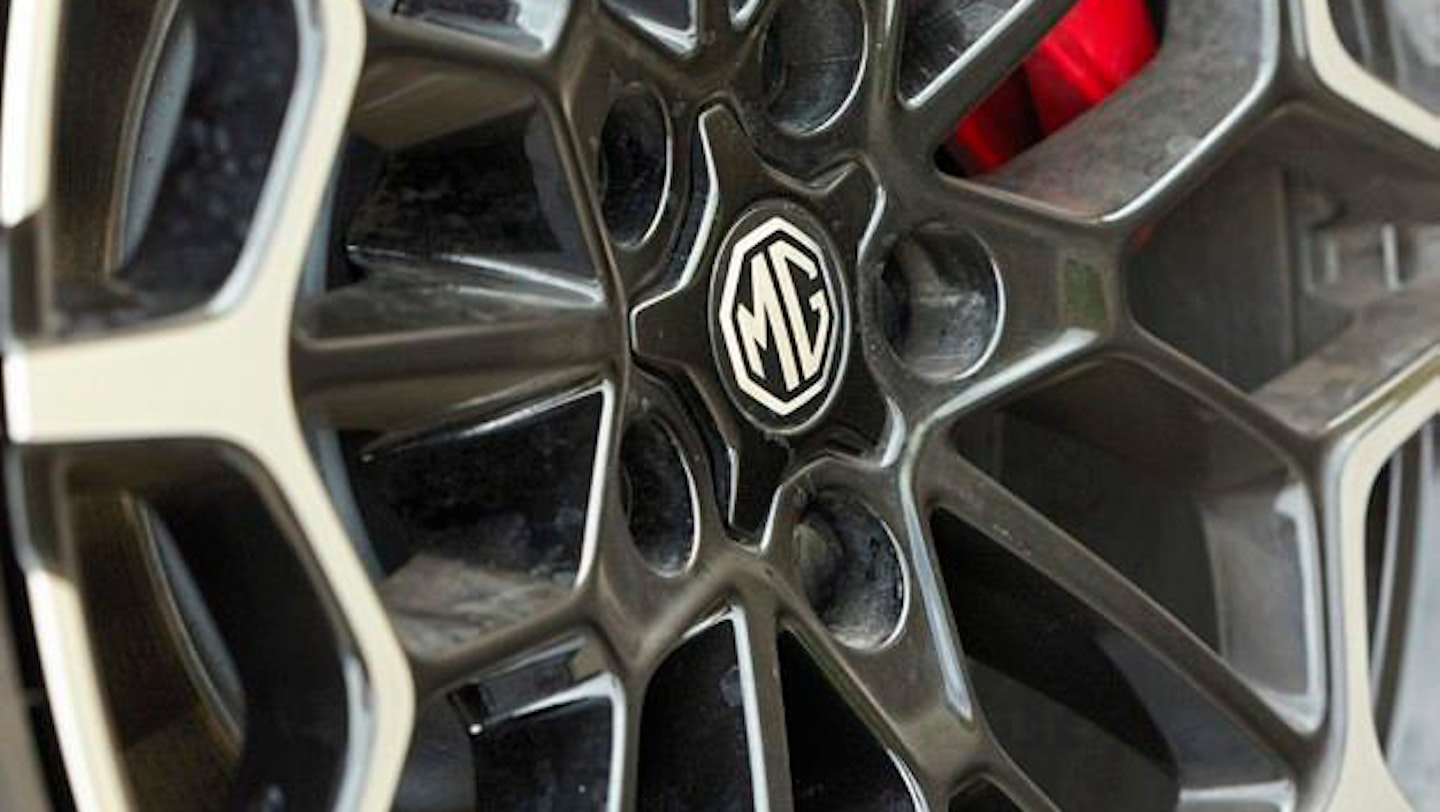
Believe me, I was trying. Push the start button and everything wakes up in front of you but while in most new cars, you’re subjected to a crude and distractingly large screen carelessly nailed to the middle of the dash, not so here. The Cyberster’s crisp looking displays are wrapped neatly around the driver in a nacelle. Given a ten-minute fiddle and prod, it all becomes pleasing intuitive – although I will always personally favour buttons to vague haptics. There are a few push-pull switches in the centre console though, which adds a bit of old world charm.
No gear stick, of course. There’s a selector for the drive modes – Comfort, Custom, Sport, Track – which tweaks the level of steering assistance, accelerator mapping and torque distribution between front and rear axles. Bet it’s disappointing to drive, though? Like any other woolly, disconnected EV, right? Erm… MG UK has been very keen to point out that this is a car worthy of 100 years’ worth of MG history – what it calls ‘a halo car’. This is make or break for the firm’s reputation in Britain – the Cyberster had to be right. It needed to feel like a proper sports car and boy… it really does.
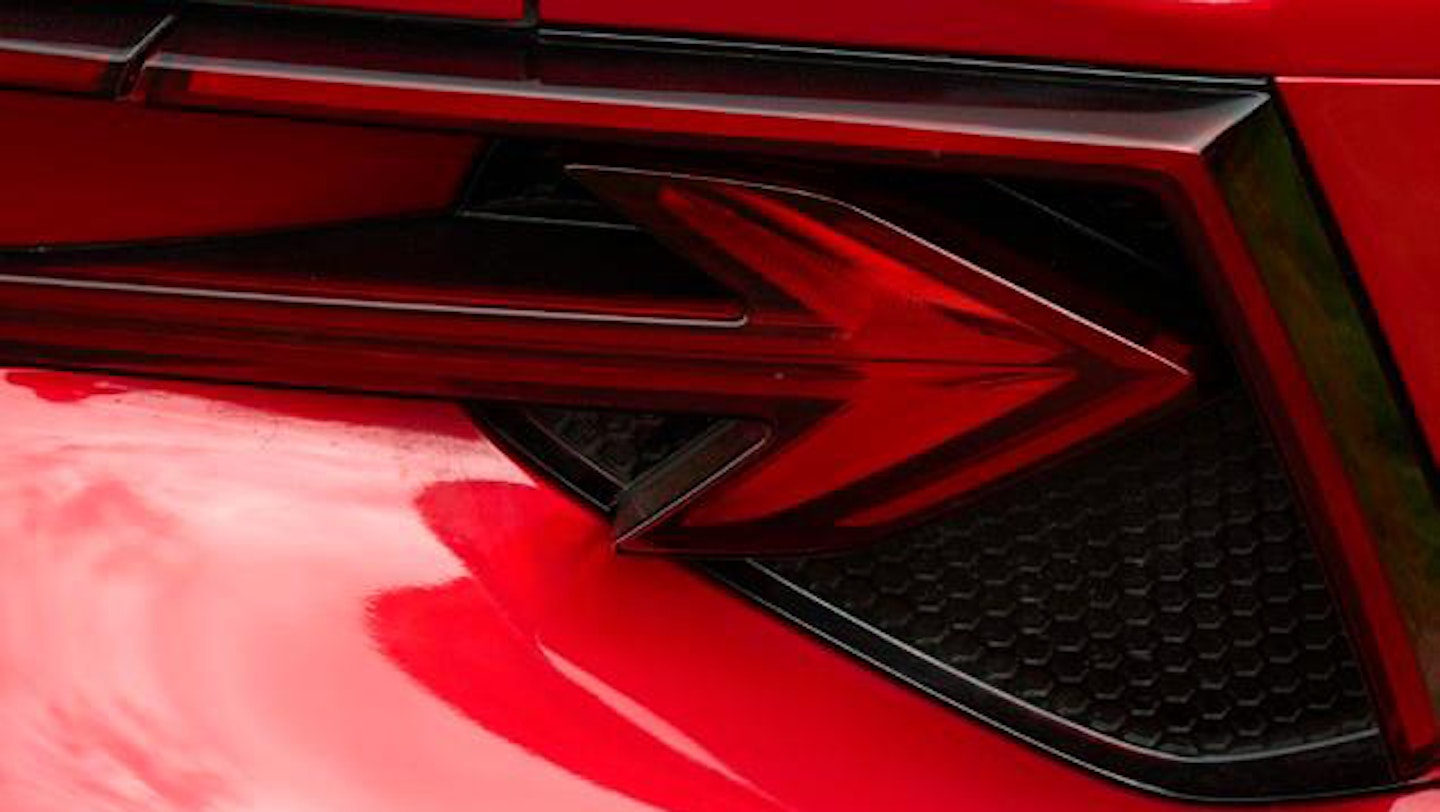
What the Cyberster lacks in alluringly farty exhaust sounds, it makes up with supreme road manners. Feeling 500kg lighter than it is, and with a 50:50 front-to-rear weight distribution, the Cyberster darts into bends and zips out of them with fine composure – no sign of any chassis flex, squeaks or rattles on even the poorest surfaces. Steering is quick and brakes have instant bite. It’s an electric car that, dare I say it… feels alive.
Both models on sale in the UK use a 77kW battery (74.4kW usable) with a 7kW onboard charger. Maximum charging capability is 144kW – nothing that special by today’s standards but good enough for a 10 to 80 per cent charge in 38 minutes on a fast charger, or 10.5 hours on a domestic 7kW wallbox. Sorry, I almost bored myself to sleep. More excitingly, the Cyberster is predictably fast. This entry level Trophy is powered by a 335bhp/350lb ft motor driving the rear wheels and will do sixty in five seconds. Opt for the all-wheel-drive GT and you’ll get an extra 161bhp and 295lb ft of torque from a second motor driving the front axle, which equates to 496bhp and 535lb ft of torque – and a 0-62mph sprint in 3.2sec (matching a McLaren F1). Range? About 300 miles, they say… but not driving like that, madam. Seriously, this is a classic car magazine, and we’re not obliged to sing its praises, but the Cyberster deserves every scrap of recognition it gets. I never imagined I’d find myself being so impressed by an EV but… I’m glad that when it happened, it was an MG.
WHICH ONE IS COMING HOME WITH ME?
Oh dear. How harshly will you judge me by declaring such praise for an electric car? For the purposes of our general 20-year ‘classic cut-off’, the Cyberster is decisively excluded, but know this: Those who keep theirs for 20 years or more will be preserving an important slice of the company’s history. It’s in possession of all the qualities you expect from an MG – the Cyberster recaptures the spirit of the cars we’ve known, respected or loved our whole lives. But hey, it’s disqualified. For now…
The lineage between these three MGs is, to say the least, irregular. Tenuous even, to some critics. But as with any car maker that’s been through so many incarnations, it doesn’t mean you can’t draw the link between them. All three were developed, born from, and into, very different worlds but their all-round talents echo each other’s. Throughout its lifespan, the iconic MGB managed to brilliantly harmonise fun with comfort, as did the MG XPower SV-R – unexpectedly. With the death of MG Rover in 2005 came the end of the astonishing SV – arguably the firm’s greatest achievement of all. What nobody talks enough about is its supremely advanced body engineering – far beyond that of mid-level supercars at the time. Its carbon fibre construction is the stuff of the exotic hypercar. An SV-R might look utterly ludicrous these days, but I think it’ll go down rather well in the driveway next to my 2CV. Without doubt, the extraordinarily talented MG XPower SV-R deserves its place there, and in British automotive history.
